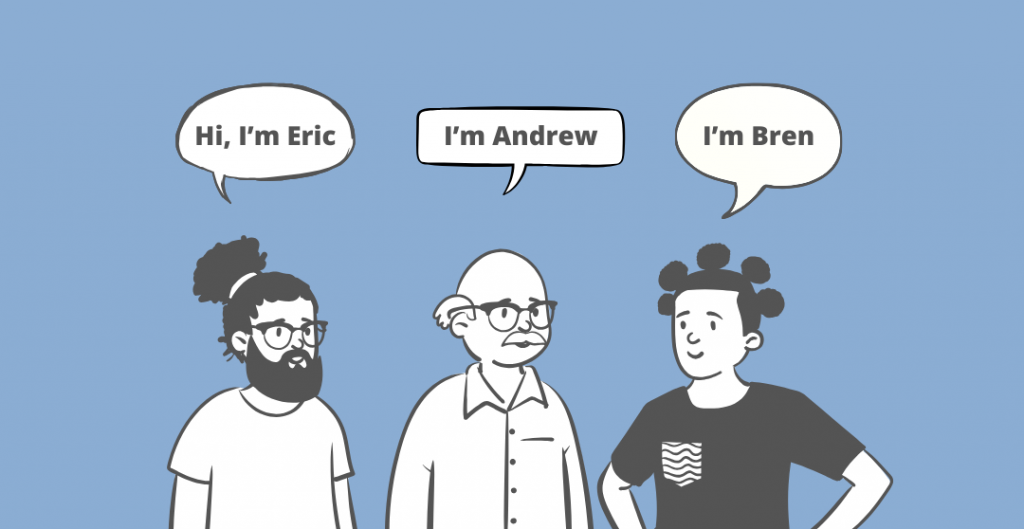♬ It ain't what you do it's the way that you do it... ♬

♬...and that's what gets results ♬
Bananarama and Fun Boy Three
There's a moment in every manager's career when the penny drops.
You realise that two people can do exactly the same thing - give the same feedback, deliver the same message, make the same request - yet get completely different results.
One manager leaves the team feeling motivated and clear about next steps. The other creates defensiveness, confusion, and damaged relationships.
Same content. Different outcome.
The difference really isn't what you do - it's the way that you do it.
The lightbulb moment
This insight came from my director at my leaving presentation back in 2001.
He said:
"Sarah has made a positive contribution and achieved much, but it's not so much what she does, it's the way she does it that really makes the difference."
Fast forward to 2013, and that phrase, combined with inspiration from the Bananarama and Fun Boy Three song, became the foundation of everything I now teach about workplace culture.
It was my lightbulb moment. Workplace success isn't just about what we say and what we do. It's about how we do things and the way we say them.
The Savvy Seesaw in action
It gets more interesting because every conversation we have is attempting to balance two things simultaneously - getting results and maintaining relationships.I call this the Savvy Seesaw.

Some managers are naturally results-focused. They'll tackle tough issues head-on, deliver direct feedback, and push for outcomes even if that sometimes ruffles feathers.
Others instinctively prioritise relationships. They'll go to great lengths to keep everyone happy and avoid conflict, even if it means not addressing problems that need fixing.
Both approaches can work, but it only works brilliantly when you understand how to balance the two sides. And that balance? That's all about the way you do it and the way you say it.
When the seesaw tips
Let me tell you about three managers I've worked with over the years. I’ll call them the Good, the Bad, and the Ugly.
The Good was Eric, one of my first managers. He was straight-talking and results-driven, but he always showed respect for people's contributions. When he gave feedback, it was honest but delivered with genuine care for helping you improve. He got results consistently, but people trusted him because of how he went about it.
The Bad was Andrew. He was also results-focused, but he lacked the relationship side entirely. He'd make decisions without consultation, send demanding emails, and show little interest in how his approach affected others. He accomplished his goals, but left a trail of frustrated and demotivated people in his wake.
The Ugly was Bren. She swung erratically between being overly demanding one moment and overly apologetic the next. This inconsistency meant people never knew where they stood with her. Her unpredictable approach undermined both results and relationships.
The difference between them was not what they were trying to achieve, but how they went about achieving it.
The balanced approach
What does the balanced approach look like?
It's being honest but kind. You can deliver difficult messages without being brutal. You can be direct without being dismissive.
It's showing respect whilst maintaining standards. You can hold people accountable while treating them with dignity.
It's engaging people in solutions. Rather than just pointing out problems, you involve people in figuring out how to fix them.
It's being consistent. People need to know what to expect from you. Erratic leadership styles create anxiety and confusion.
It's paying attention to timing and context. The same message delivered at the wrong time or in the wrong setting can have a completely different impact.
Conversations with STREETCREDS
This is why I developed the STREETCREDS framework. It's not enough to know what needs to be said, you need to know how to say it.
The framework shows you how to create the right conditions for effective conversations (the STREET part) and then how to approach each conversation with the right balance of being Candid, Respectful, Engaging, Directional, and Sensitive (the CREDS part).
When all these elements work together, something remarkable happens. You can have honest conversations about difficult topics whilst strengthening relationships. You can deliver challenging feedback that people thank you for. You can make tough decisions that people support even when they don't personally benefit.
Making it real
Think about a recent conversation that didn't go as well as you'd hoped. Was it really about what you said, or was it more about how you said it?
Maybe you had the right message, but delivered it at the wrong time. Perhaps you were factually correct, but emotionally tone-deaf. Or possibly you were so focused on being nice that your message got lost.
How you approach conversations is a skill you can develop. You don’t need to change your personality. You just need to become more intentional about your approach.
The way forward
Next time you need to have an important conversation, ask yourself:
- What result do I want to achieve?
- How can I maintain a positive relationship here?
- What approach will work best with this particular person?
- How can I balance honesty with kindness?
That's what we focus on in our Savvy Conversations coaching and workshops - helping leaders master not just what to say, but how to say it in ways that get results and build stronger relationships.
After all, as Bananarama and Fun Boy Three knew:
“It ain't what you do - it's the way that you do it.
And that's what gets results.”
What's one conversation you could approach differently this month?
Hi, I’m Sarah Harvey, the founder of Savvy Conversations and creator of the STREETCREDS framework. My approach helps leaders transform how they communicate to achieve better results and stronger relationships.

